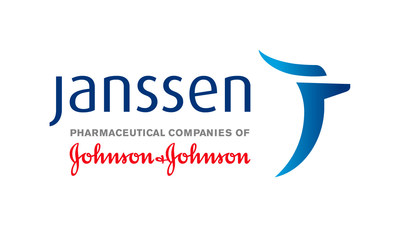The Janssen Pharmaceutical Companies of Johnson & Johnson announced today important new real-world evidence confirming XARELTO® (rivaroxaban) reduced the risk of recurrent venous thromboembolism (VTE) – or blood clots – in patients who are morbidly obese, with effectiveness and safety similar to warfarin.
| TITUSVILLE, N.J., Sept. 20, 2019 /PRNewswire/ -- The Janssen Pharmaceutical Companies of Johnson & Johnson announced today important new real-world evidence confirming XARELTO® (rivaroxaban) reduced the risk of recurrent venous thromboembolism (VTE) – or blood clots – in patients who are morbidly obese, with effectiveness and safety similar to warfarin. Notably, patients taking XARELTO® had significantly reduced healthcare resource utilization (HRU) and total medical costs compared to those taking warfarin. Results of this study were recently published in Thrombosis Research.
Click to Tweet: New real-world study of patients with #bloodclots and morbid #obesity shows #DOAC had similar safety and effectiveness, and less costs than warfarin http://po.st/OwDWlM Approximately 40 percent of the U.S. population have obesity and about 8 percent have morbid obesity. Obesity increases the risk of VTE by two- to six-fold compared with non-obese patients.i Typically, morbidly obese patients are treated with older anticoagulants, such as warfarin, and require more laboratory monitoring than patients of normal weight. In addition, morbidly obese patients are often underrepresented in Phase 3 studies. “This is the first large-scale, real-world study to evaluate a direct oral anticoagulant (DOAC) in morbidly obese patients with VTE, and the first to identify healthcare resource utilization and medical costs in this population,” said Alex C. Spyropoulos, M.D., Professor of Medicine, The Donald and Barbara Zucker School of Medicine, Hofstra University, Northwell Health at Lenox Hill Hospital, New York, N.Y.1 “We now know from this research that rivaroxaban is as effective and safe as dose-adjusted warfarin when treating morbidly obese patients, without the need for routine anti-Xa measurements, and with significantly lower healthcare resource utilization. Physicians should feel confident in prescribing rivaroxaban for managing VTE in this population.” In 2016, the International Society on Thrombosis and Haemostasis (ISTH) published a guidance statement recommending against DOAC use in morbidly obese patients. This recommendation was based on limited clinical data and concerns about available pharmacokinetic/pharmacodynamic (PK/PD) evidence from another DOAC that suggested a decrease in drug levels with increased body weight.ii Published data for XARELTO®, however, found that the medicine’s PK/PD were not meaningfully influenced by body weight, and this research is reflected in the XARELTO® prescribing information. “Obesity affects millions of Americans and is a significant risk factor for VTE and NVAF,” said Paul Burton, M.D., Ph.D., FACC, Vice President, Medical Affairs, Internal Medicine, Janssen Scientific Affairs, LLC. “These real-world studies, coupled with the consistent PK/PD and clinical data for XARELTO® in obese patients with VTE or NVAF, underpin the broad clinical utility of XARELTO® and provide clinicians with the evidence to consider an alternative option to warfarin.” Study Results
The on-treatment analysis found no significant differences for recurrent VTE and major bleeding between XARELTO® and warfarin, with significantly lower HRU and total medical costs associated with XARELTO®. The results of this VTE study are consistent with data across body weightsiii from the EINSTEIN DVT and EINSTEIN PE randomized clinical trials, which were the Phase 3 registration trials for XARELTO® in VTE (deep vein thrombosis or DVT, and pulmonary embolism or PE). Additionally, this real-world VTE study complements the only other large-scale, real-world studyiv of over 7,000 patients with NVAF and morbid obesity where consistent effectiveness, safety and reduction in healthcare and total medical costs with XARELTO® were shown. The safety and effectiveness align with what was observed in ROCKET AF, the Phase 3 registration trial for XARELTO® in NVAF. Study Background The study included two analyses: ITT and on-treatment. The primary outcome was the risk of recurrent VTE, defined as a hospitalization or ER visit with a primary diagnosis of VTE during the follow-up period. Secondary outcomes included major bleeding risk, HRU and costs. Participants were ineligible if they had a diagnosis of VTE or atrial fibrillation at any time prior to the treatment initiation, or if they had an oral anticoagulant prescription prior to treatment initiation. All real-world studies have limitations. This study was a retrospective claims analysis with inherent limitations. In this study, the use of administrative claims data may have been coded incorrectly or inconsistently. Residual confounding due to unmeasured confounders not included in the propensity match could not be fully excluded. A claim for a prescription does not necessarily indicate that the medication was taken. The use of diagnosis codes to identify patients who have morbid obesity may have been underestimated as height and weight were not available to confirm body mass index status. WHAT IS XARELTO®? XARELTO® is a prescription medicine used to:
XARELTO® is also used with low dose aspirin to:
It is not known if XARELTO® is safe and effective in children. IMPORTANT SAFETY INFORMATION WHAT IS THE MOST IMPORTANT INFORMATION I SHOULD KNOW ABOUT XARELTO®? XARELTO® may cause serious side effects, including:
You may have a higher risk of bleeding if you take XARELTO® and take other medicines that increase your risk of bleeding, including:
Tell your doctor if you take any of these medicines. Ask your doctor or pharmacist if you are not sure if your medicine is one listed above. Call your doctor or get medical help right away if you develop any of these signs or symptoms of bleeding:
If you take XARELTO® and receive spinal anesthesia or have a spinal puncture, your doctor should watch you closely for symptoms of spinal or epidural blood clots. Tell your doctor right away if you have back pain, tingling, numbness, muscle weakness (especially in your legs and feet), or loss of control of the bowels or bladder (incontinence). XARELTO® is not for use in people with artificial heart valves XARELTO® is not for use in people with antiphospholipid syndrome (APS), especially with positive triple antibody testing, who have a history of blood clots. Do not take XARELTO® if you:
Before taking XARELTO®, tell your doctor about all your medical conditions, including if you:
Tell all of your doctors and dentists that you are taking XARELTO®. They should talk to the doctor who prescribed XARELTO® for you before you have any surgery, medical or dental procedure. Tell your doctor about all the medicines you take, including prescription and over-the-counter medicines, vitamins, and herbal supplements. Some of your other medicines may affect the way XARELTO® works, causing side effects. Certain medicines may increase your risk of bleeding. See “What is the most important information I should know about XARELTO®?” HOW SHOULD I TAKE XARELTO®?
If you take XARELTO® for:
WHAT ARE THE POSSIBLE SIDE EFFECTS OF XARELTO®? XARELTO® may cause serious side effects:
The most common side effect of XARELTO® was bleeding. Call your doctor for medical advice about side effects. You may report side effects to FDA at 1-800-FDA-1088. You may also report side effects to Janssen Pharmaceuticals, Inc., at 1-800-JANSSEN (1-800-526-7736). Please click here for full Prescribing Information, including Boxed Warnings, and Medication Guide. Trademarks are those of their respective owners. Janssen and Bayer together are developing rivaroxaban. For more information about XARELTO®, visit www.xarelto.com. About Janssen Cardiovascular & Metabolism In Cardiovascular & Metabolism (CVM), we take on the most pervasive diseases that burden hundreds of millions of people and healthcare systems around the world. As part of this long-standing commitment and propelled by our successes in treating type 2 diabetes (T2D) and thrombosis, we advance highly differentiated therapies that prevent and treat life-threatening cardiovascular, metabolic and retinal diseases. Uncovering new therapies that can improve the quality of life for this large segment of the population is an important endeavor – one which Janssen CVM will continue to lead in the years to come. Our mission is global, and local and personal. Together, we can reshape the future of cardiovascular, metabolic and retinal disease prevention and treatment. Please visit www.janssen.com/cardiovascular-and-metabolism. About the Janssen Pharmaceutical Companies of Johnson & Johnson At Janssen, we’re creating a future where disease is a thing of the past. We’re the Pharmaceutical Companies of Johnson & Johnson, working tirelessly to make that future a reality for patients everywhere by fighting sickness with science, improving access with ingenuity, and healing hopelessness with heart. We focus on areas of medicine where we can make the biggest difference: Cardiovascular & Metabolism, Immunology, Infectious Diseases & Vaccines, Neuroscience, Oncology, and Pulmonary Hypertension. Learn more at www.janssen.com. Follow us at www.twitter.com/JanssenUS. Janssen Pharmaceuticals, Inc. and Janssen Scientific Affairs, LLC are part of the Janssen Pharmaceutical Companies of Johnson & Johnson. Cautions Concerning Forward-Looking Statements This press release contains “forward-looking statements” as defined in the Private Securities Litigation Reform Act of 1995 regarding XARELTO® (rivaroxaban). The reader is cautioned not to rely on these forward-looking statements. These statements are based on current expectations of future events. If underlying assumptions prove inaccurate or known or unknown risks or uncertainties materialize, actual results could vary materially from the expectations and projections of Janssen Scientific Affairs, LLC, any of the other Janssen Pharmaceutical Companies and/or Johnson & Johnson. Risks and uncertainties include, but are not limited to: challenges and uncertainties inherent in product research and development, including the uncertainty of clinical success and of obtaining regulatory approvals; uncertainty of commercial success; manufacturing difficulties and delays; competition, including technological advances, new products and patents attained by competitors; challenges to patents; product efficacy or safety concerns resulting in product recalls or regulatory action; changes in behavior and spending patterns of purchasers of health care products and services; changes to applicable laws and regulations, including global health care reforms; and trends toward health care cost containment. A further list and descriptions of these risks, uncertainties and other factors can be found in Johnson & Johnson’s Annual Report on Form 10-K for the fiscal year ended December 30, 2018, including in the sections captioned “Cautionary Note Regarding Forward-Looking Statements” and “Item 1A. Risk Factors,” and in the company’s most recently filed Quarterly Report on Form 10-Q, and the company’s subsequent filings with the Securities and Exchange Commission. Copies of these filings are available online at www.sec.gov, www.jnj.com or on request from Johnson & Johnson. Neither the Janssen Pharmaceutical Companies nor Johnson & Johnson undertakes to update any forward-looking statement as a result of new information or future events or developments. 1 Dr. Alex Spyropoulos worked directly with Janssen Scientific Affairs, LLC and was compensated for his work on this study. i A.L. Freeman, R.C. Pendleton, M.T. Rondina. Prevention of venous thromboembolism in obesity. Expert Rev Cardiovasc Ther. 2010;8:1711-1721. Media contact: Investor contacts: Lesley Fishman
SOURCE Janssen Pharmaceutical Companies of Johnson & Johnson |





